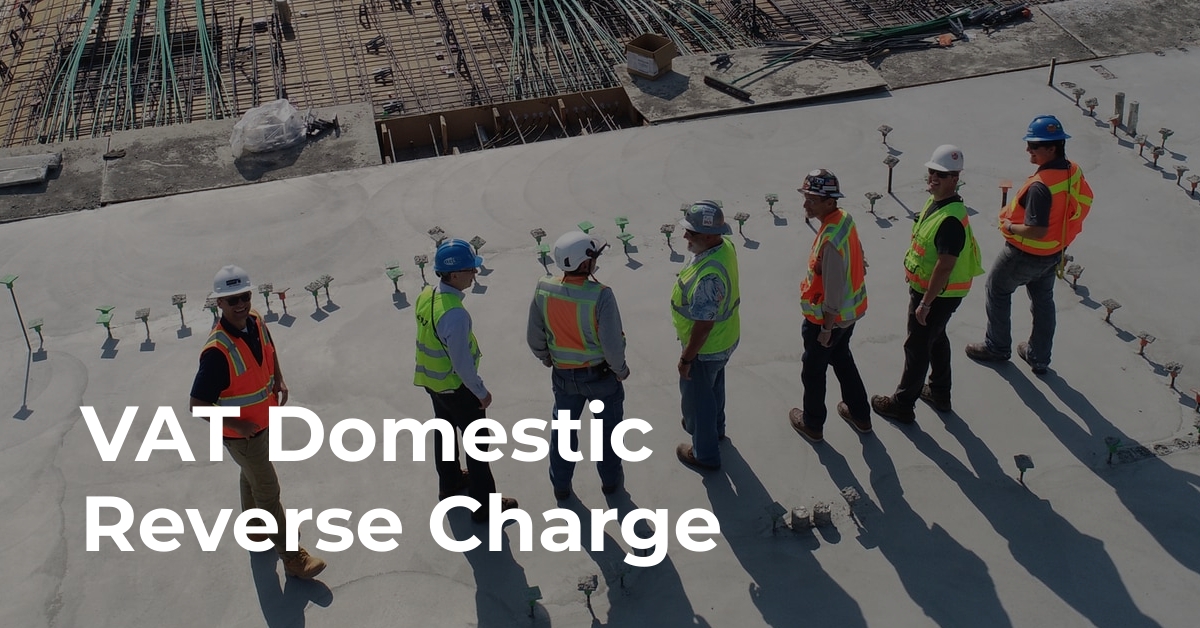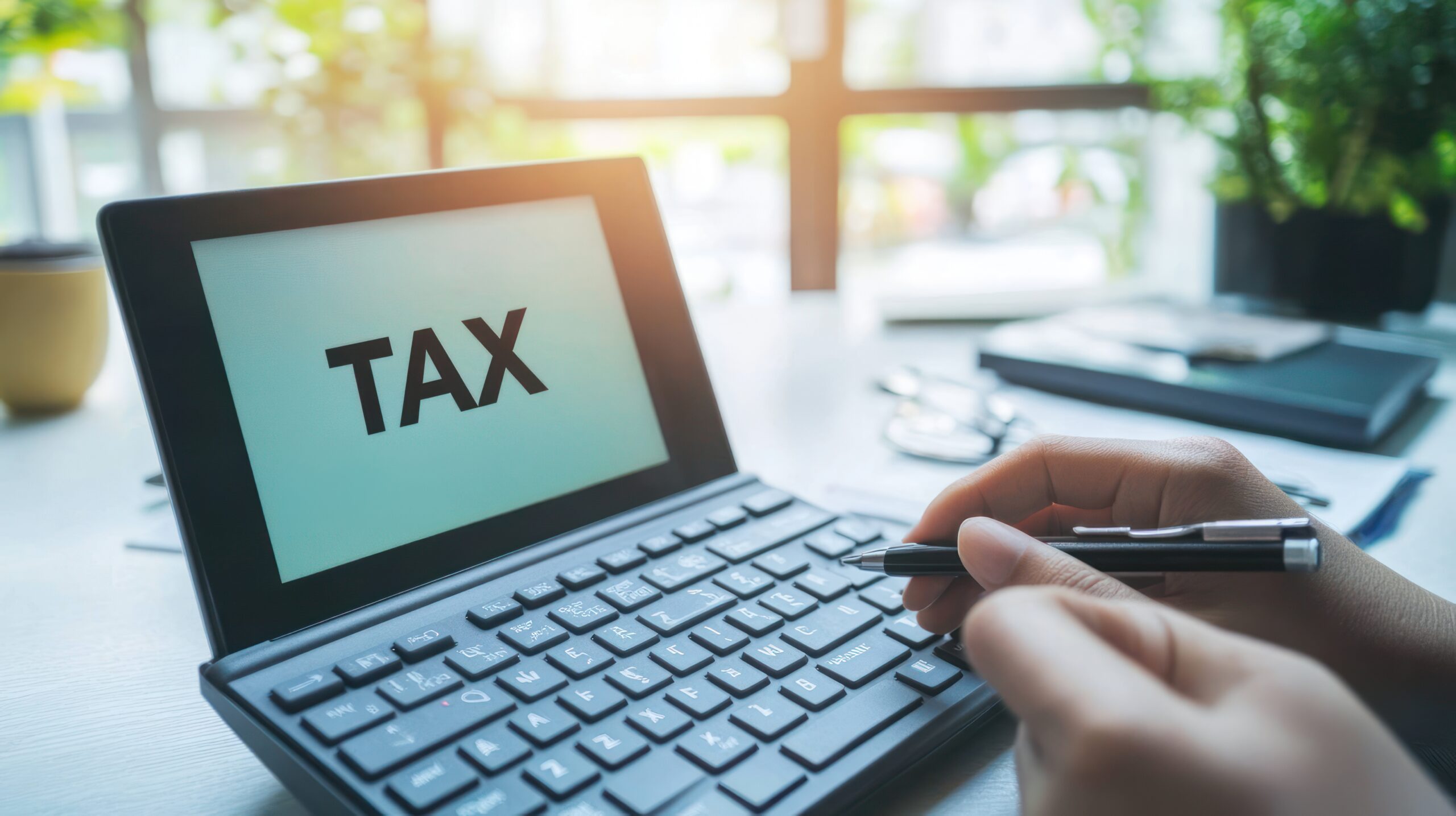How the VAT domestic reverse charge affects the construction industry?

VAT domestic reverse charge, a huge topic affecting so many in the construction industry. Have you come across it yet? Don’t fear, it’s not as complicated as it sounds and we’re going to cover what it is, how it works, who it applies to and how to apply it.
What is the domestic reverse charge?
To summarise, the domestic reverse charge is a VAT simplification method introduced by HMRC to reduce the amount of administration work required between contractors and their subcontractors.
It ultimately means the subcontractor may not have to charge their contractor VAT and likewise the contractor wouldn’t have to pay VAT. The subcontractor will simply raise their invoice as normal but enter it with a VAT rate that states ‘Domestic Reverse Charge 5%’ or ‘Domestic Reverse Charge 20%’ so that the contractor knows exactly how to deal with it within their books.
To recap, it’s ultimately a reduction in administration that should save time. But there is an important factor to consider when advising subcontractors. Their cashflow will now be reduced by the VAT they previously would have charged and paid in their VAT return. An important factor to consider if you are doing cashflow forecasting for your clients.
The different types of buyers
There are two different types of buyers that may be exempt from the domestic reverse charge, which are ‘End Users’ and ‘Intermediary Suppliers’.
Who are End Users?
They are the consumer of the service with no further ongoing supply. They may be VAT and construction industry scheme registered but the domestic reverse charge would not apply to them.
Who are Intermediary Suppliers?
Intermediary Suppliers are defined as VAT and construction industry scheme registered businesses that are connected or linked to end users. If Intermediary Suppliers buy construction services and re-supply them to a connected or linked end user, without making material alterations to the supplies, they’re all treated as if they’re end users, and the reverse charge would not apply.
A connection or link to an end user would be:
- Having a relevant interest in the same land where the construction works are taking place.
- Being part of the same corporate group
In the event of an end user purchasing services, what does the supplier need to do?
The supplier will need to obtain written confirmation from the buyer that they are in fact an end user. This should be in writing via post, email or in a written contract.
An exemption to the rules, employment businesses supplying construction workers
Employment businesses are those that provide the services of their staff to construction businesses that use them. A member of staff is defined as; a contractually employed individual on the company’s payroll, including directors.
If the company providing the services is deemed to be an ‘employment business’, then the domestic reverse charge would not apply, and VAT should be charged as normal.
How to apply the domestic reverse charge as a buyer?
As a buyer, the business should be VAT and construction industry scheme registered. A supplier will have invoiced the company for services for which the domestic reverse charge applies. As a result, the invoice received should clearly state that the domestic reverse charge applies and the rate at which the services are VAT-able. This will be either 20% or 5%.
Here’s a really useful flow chart to determine if the reverse charge should apply:
On the VAT return submission, you’ll need to ensure your software supports the domestic reverse charge, or make sure the VAT that hasn’t been charged by your supplier correctly goes into boxes, 1 and 4 of your VAT return, as well as the net amount of the invoice into box 7.
How to apply the domestic reverse charge as a supplier?
As a supplier that is VAT and construction industry scheme registered, you’ll need to determine that your buyer of services is VAT and construction industry scheme registered and is not an end user.
You can use this flow chart to easily determine if you need to apply the domestic reverse charge:
Once you’ve determined that the domestic reverse charge does apply, you’ll need to:
- Raise a sales invoice and ensure your services are entered at the correct rate of 20% or 5%. In certain software packages like Nomi, you’ll be able to select ‘DRC 5%’ or ‘DRC 20%’ which will do most of the hard work for you. The VAT charged to the buyer must be nil in relation to items the domestic reverse charge applies to.
- Upon raising the invoice, you’ll need to ensure a note is included that states something like: “Reverse charge applies to items marked ‘Domestic Reverse Charge’. You’ll need to account for VAT on these items to HMRC, at the VAT rate shown.”
- On your VAT return submission, no VAT should be included within box 1 for the services which domestic reverse charge applies to. You should include the net amount in box 6 as normal.
Some accounting software, like Nomi, will automate every aspect for you and make raising invoices a breeze.
Bonus cashflow tip – Monthly VAT submissions
Due to the introduction of the domestic reverse charge, it will affect cashflow of those that are no longer charging VAT. So, it’s best to plan ahead for the immediate future. On each VAT return submissions, the company may be due a VAT rebate due to their continued outgoings. As a result, it may be worthwhile to switch from quarterly to monthly VAT return submissions.
Want to find out more?
Register for a free 30-days trial or book a 1:1 demo and see how Nomi's cloud-based accounting software could help you grow your practice, become more profitable and manage your staff.
Why Accountants and Bookkeepers Are Switching to Nomi (And Why You Should Too)
If you’re an accountant or bookkeeper, you know the struggle is real. Juggling bookkeeping, payroll,...

Automated Payroll Software to Manage Payroll Easily with Nomi
Payroll management can often be complex and time-consuming for employers and employees. However, with the...

Nomi product key features update – August 2024
Bookkeeping We are excited to announce a major update to the Agent Hub page, designed...

What is Making Tax Digital?
Making Tax Digital (MTD) is a UK government initiative aimed at transforming the way businesses...

